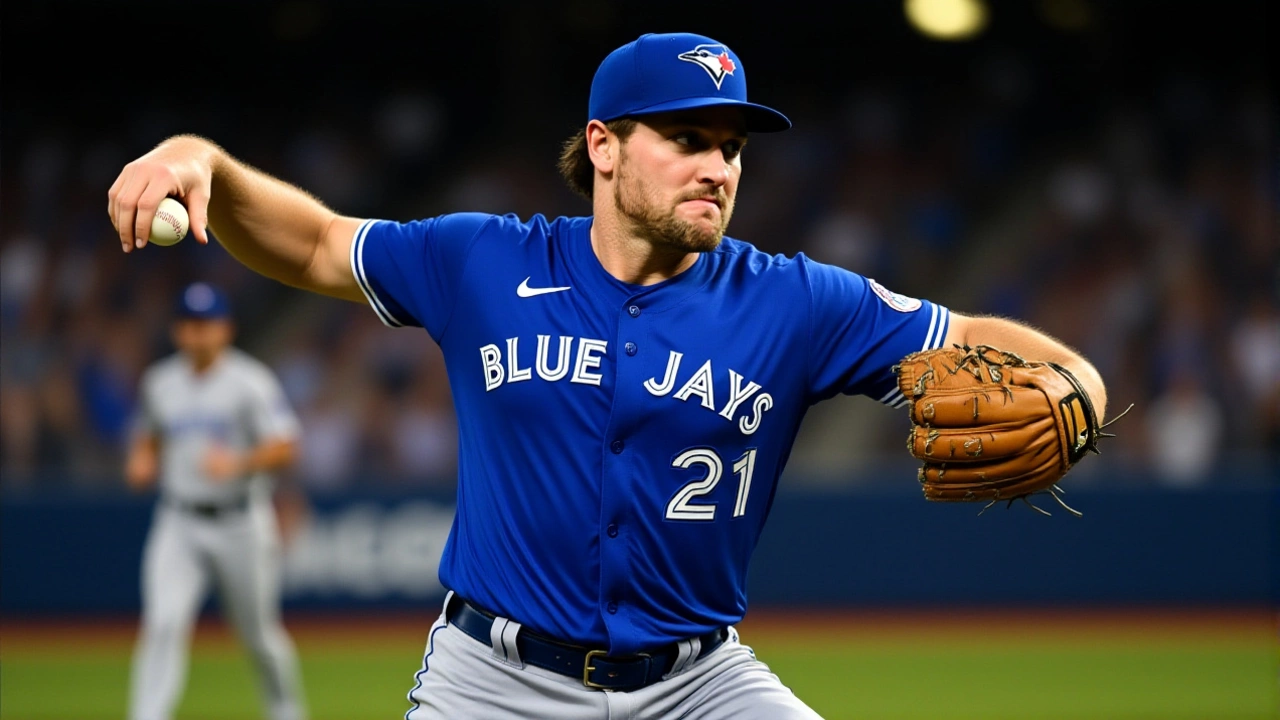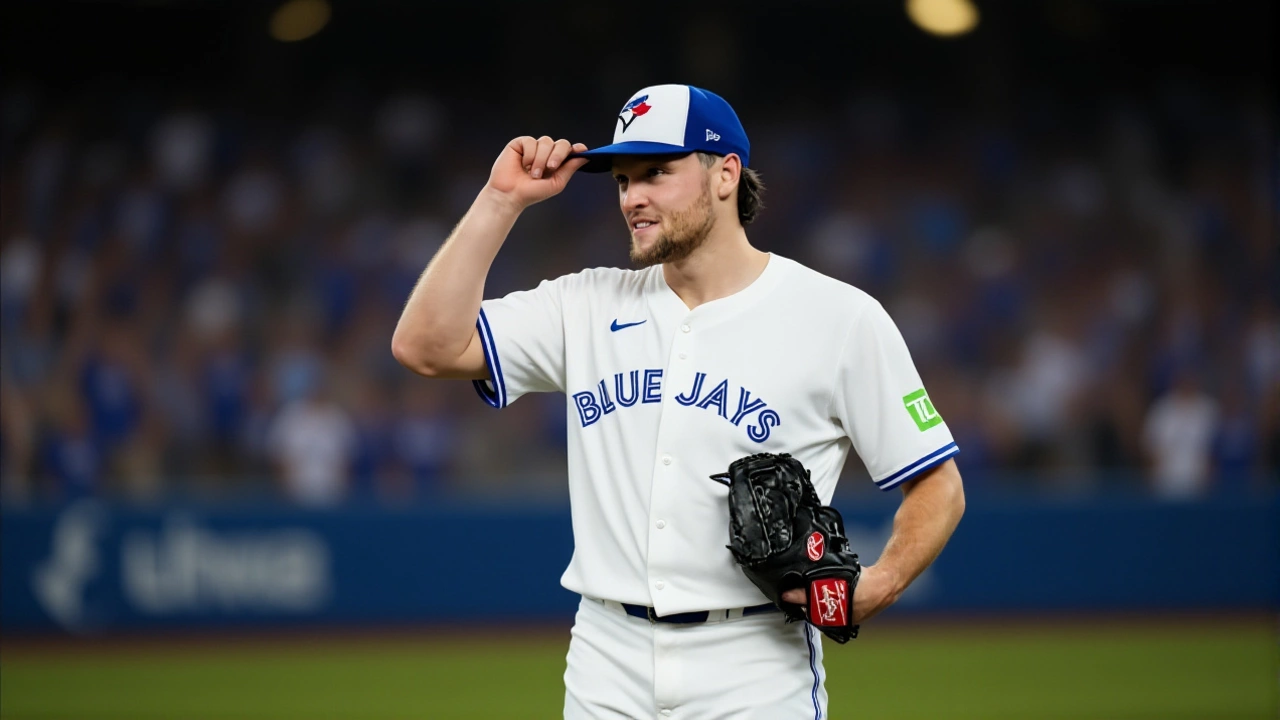When Trey Yesavage, right‑handed rookie pitcher of the Toronto Blue Jays took the mound on Friday, October 24, 2025, the atmosphere at Rogers Centre was electric. The World Series opener pitted a 22‑year‑old newcomer against the heavyweight Los Angeles Dodgers, and the result shocked the 49,286‑strong crowd.
Historical significance
The Blue Jays’ appearance marked their first World Series since the 1993 championship that ended a 32‑year drought. In fact, Yesavage became the second‑youngest pitcher ever to start Game 1 of a World Series, trailing only Ralph Branca, who threw for the Brooklyn Dodgers in 1947 at 21 years and 267 days old. The rarity of such a youth‑filled start added a layer of intrigue that fans and analysts couldn’t ignore.
Game one recap
Yesavage’s four‑inning spell limited the Dodgers to two runs, despite not having his signature splitter at full strength. He opened the storm with a clean‑cut strikeout of Shohei Ohtani, the Japanese two‑way star who had rattled 27 homers in the regular season. “It’s my goal to go out there and strike out everybody I face,” Yesavage said, his voice barely audible over the cheers. “Starting off hot gave me a boost. It was cool, really cool.”
After the first‑inning fireworks, the Dodgers managed a solitary run in the second and added another in the third, both coming off singles that slipped past the Blue Jays’ infield. By the end of the fourth inning, the scoreboard read 2‑2, and many expected a tight duel.
Then came the sixth. Toronto’s lineup erupted for nine runs, a barrage that included a two‑run homer by Vladimir Guerrero Jr. and a three‑run blast from George Springer. The surge turned a nail‑biter into a commanding 11‑4 lead.
Key performances beyond the mound
- Shohei Ohtani—despite the early strikeout, he finished the game 0‑for‑4 with two strikeouts, a reminder that even legends can stumble.
- Dave Roberts, manager of the Los Angeles Dodgers, watched from the dugout, his earlier pep talk to Ohtani about “aiming for the middle of the field” now echoing in post‑game interviews.
- John Schneider, the Toronto skipper, praised the youngster’s poise: “He looked like he was having a conversation with the ball. That release point is something you don’t see every day.”

Reactions from the dugout
Roberts, who has helmed the Dodgers since November 2015, said after the game, “We trusted the preparation. Ohtani gave it his all, but Yesavage’s angle was tough to read.” The Dodgers’ bullpen kept the damage limited after Yesavage’s exit, but the nine‑run sixth proved too much to chase.
Schneider, who took over the Blue Jays in July 2022, added, “It felt like watching a summer ball game where the dad is bragging about his kid’s swing. The energy was contagious.” He also hinted that the team’s depth will be tested in the next two games, noting that the bullpen has logged 1.20 ERA this postseason.
Implications for the series
With a 1‑0 lead, Toronto controls the narrative. The early win gives them a chance to dictate pacing, especially with the next two games scheduled at home. For the Dodgers, the loss forces a quick reset. Their 104‑58 regular‑season record demonstrates consistency, but a Game 1 setback could expose vulnerabilities, particularly against pitchers who can change release points on the fly.
Experts like former pitcher and ESPN analyst Jon "The Jester" Smith argue, “If Yesavage can keep the ball in the zone and mix his off‑speed, the Blue Jays might force the Dodgers into a series where the weak‑handed batters have to swing early.” Meanwhile, Dodgers’ ace Clayton Kershaw is slated to start Game 2, meaning the next pitching duel could be a classic left‑right showdown.

What’s next
Game 2 kicks off at 8:05 PM EDT on October 26, still at Rogers Centre. Both clubs will be tweaking lineups; the Blue Jays are expected to keep Guerrero Jr. in the third spot, while the Dodgers may shuffle the batting order to give Ohtani more protection. All eyes will be on whether Yesavage’s performance was a flash in the pan or the start of a rookie breakout that could reshape the series.
Frequently Asked Questions
How does Yesavage’s performance impact the Blue Jays’ pitching strategy?
Seeing a 22‑year‑old handle the Dodgers’ lineup for four innings gives Toronto confidence to lean on younger arms deeper into the series. It may prompt manager John Schneider to accelerate the rotation, potentially opening the door for other high‑upside prospects like left‑hander Jabari Walker in later games.
What does the nine‑run sixth inning say about the Dodgers’ defense?
The burst exposed gaps in the Dodgers’ infield positioning and a lack of quick adjustments to Toronto’s aggressive base running. Analysts note that miscommunication on the double‑play attempt contributed to the damage, a flaw the Dodgers will need to fix before Game 2.
How significant is Ohtani’s early strikeout in the context of the series?
Ohtani’s strikeout set the tone that even his power can be neutralized by precise pitching. It serves as a psychological marker for the Dodgers—if they can’t adjust quickly, the Blue Jays might target him in later at‑bats, forcing the Dodgers to evolve their approach.
Who are the key players to watch in Game 2?
For Toronto, keep an eye on Vladimir Guerrero Jr.’s clutch hitting and the emerging role of rookie shortstop Jameson Taillon. For Los Angeles, Clayton Kershaw’s first start and Ohtani’s ability to rebound will be pivotal.
What historical parallels exist for a rookie starting a World Series game?
Ralph Branca’s 1947 start is the only other instance of a sub‑23 pitcher opening a World Series. Both faced veteran lineups and managed to keep the games competitive, suggesting that youthful vigor can occasionally upset seasoned opponents.
